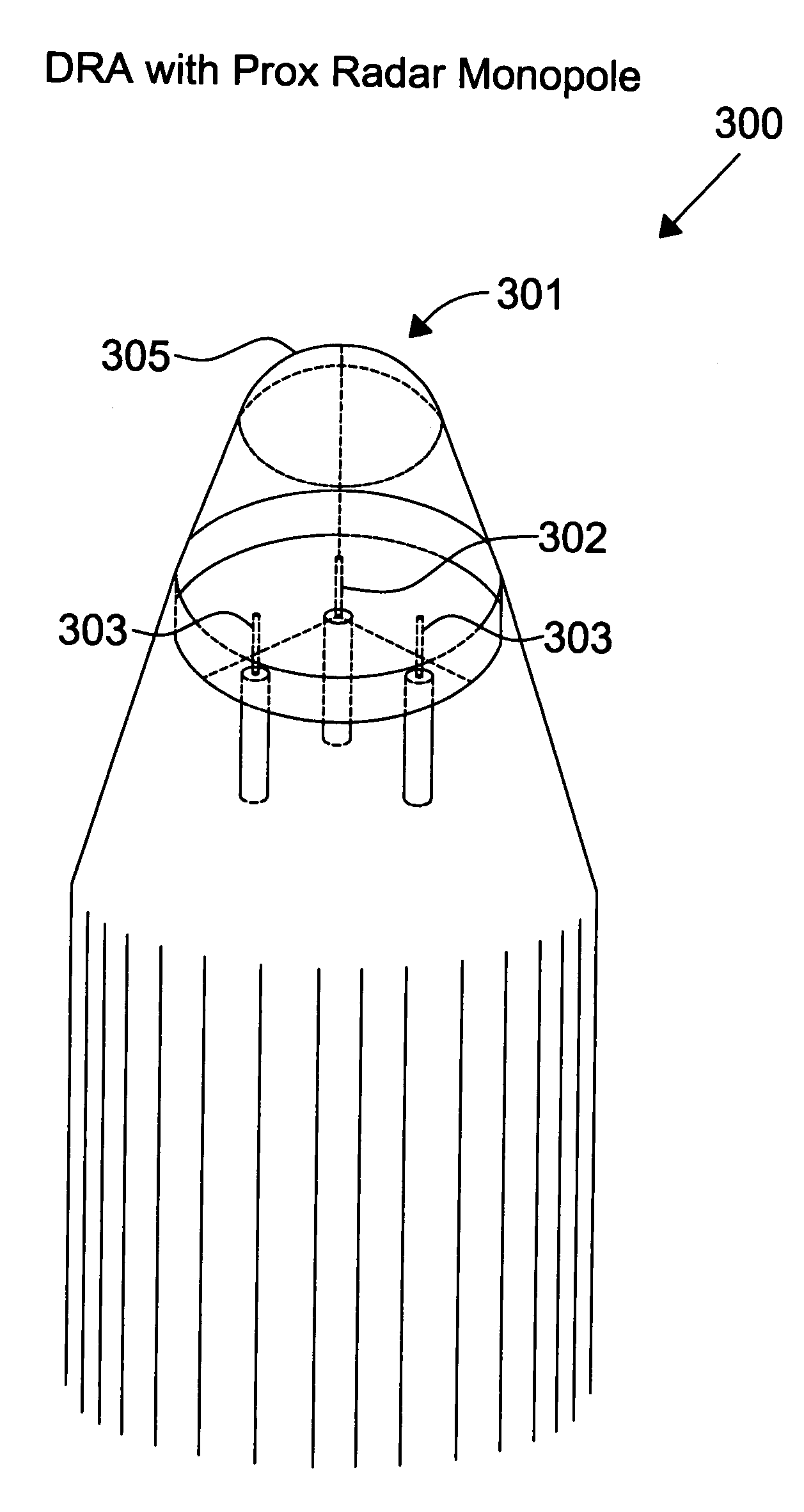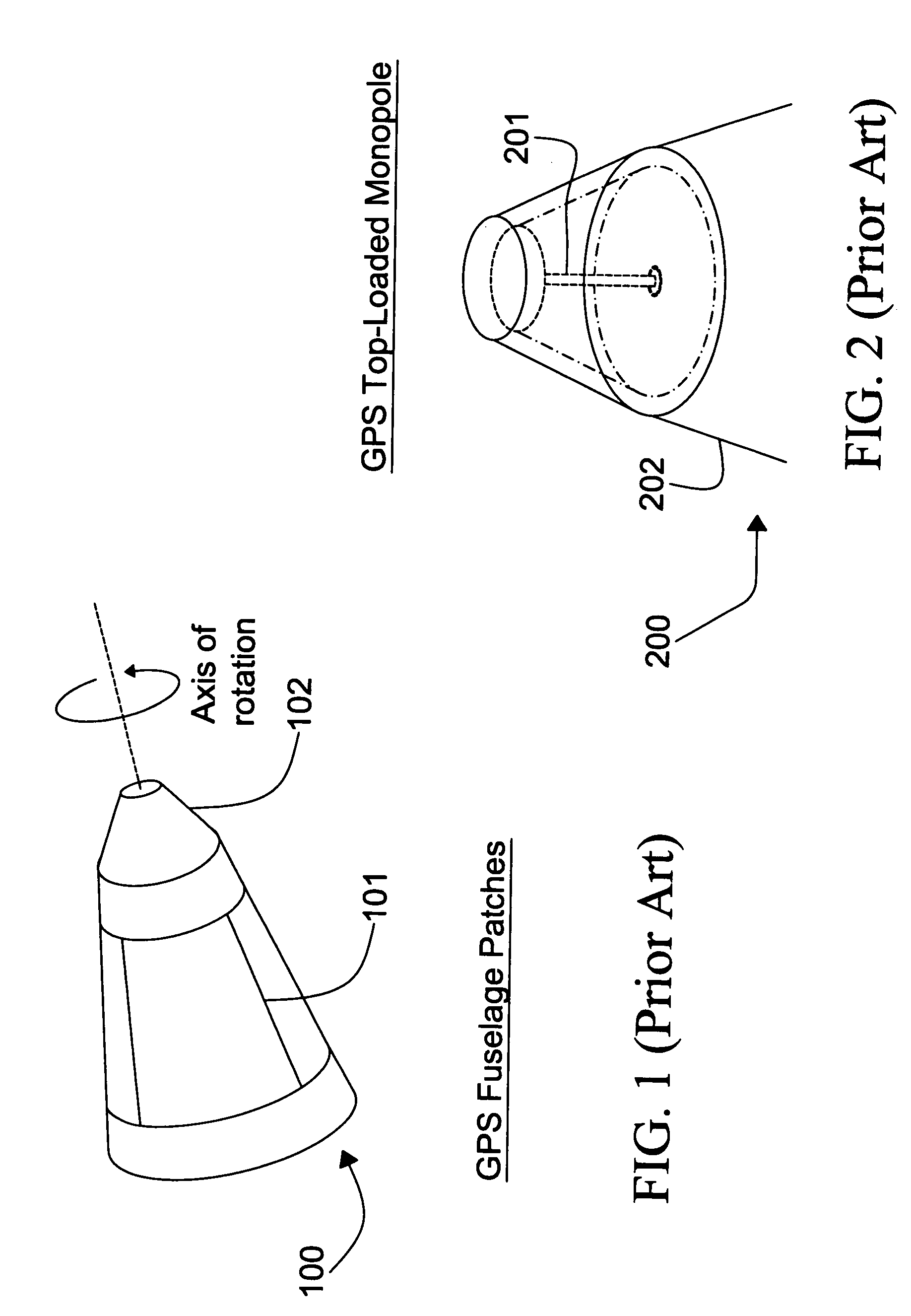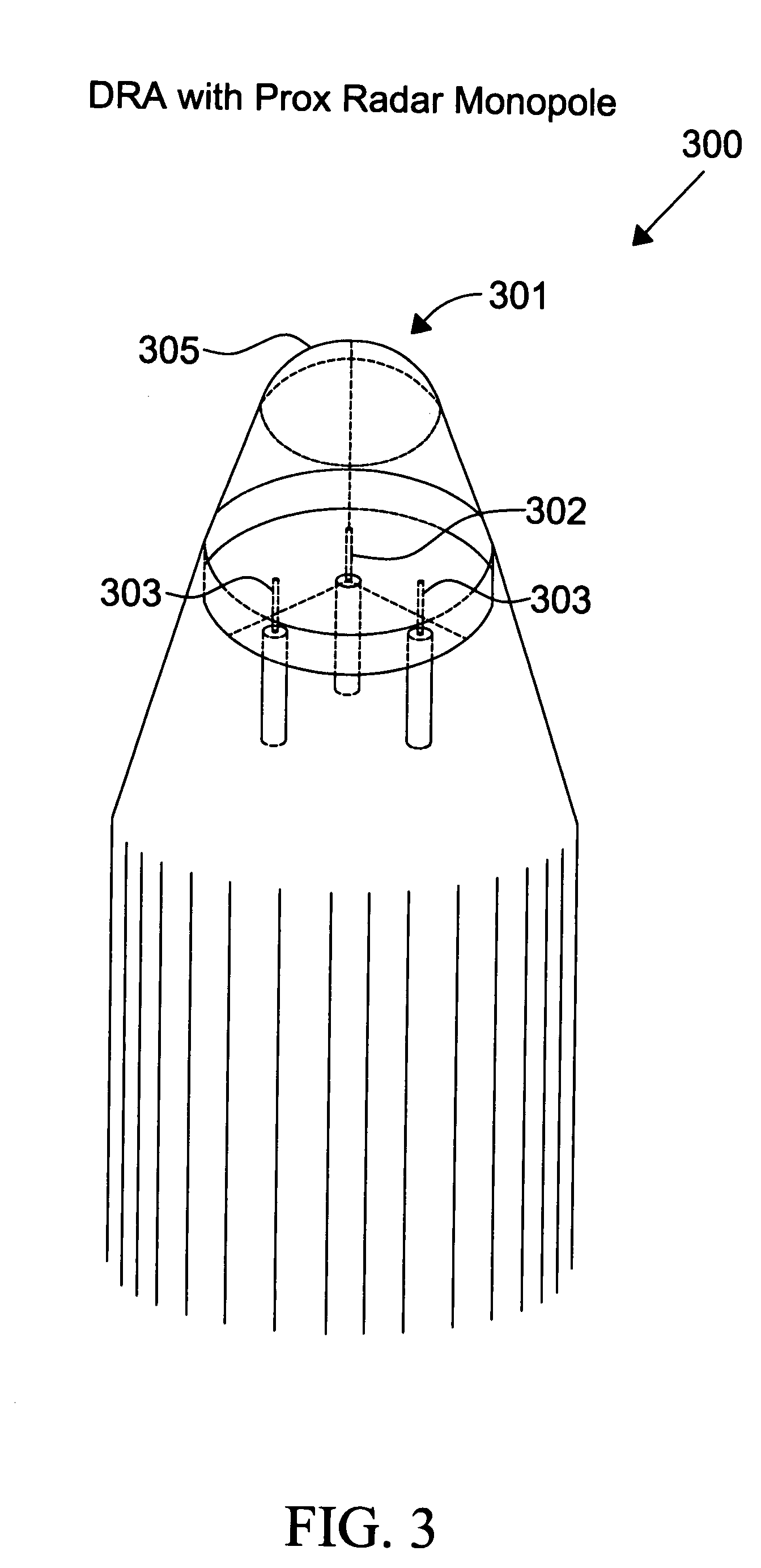Proximity radar antenna co-located with GPS DRA fuze
a technology of proximity radar and gps dra fuze, which is applied in the direction of polarised antenna unit combinations, instruments, and reradiation, can solve the problems of performance degradation of gps antenna configurations on the side of fuzes, and achieve the effect of reducing the total amount of space occupied by antennas and optimizing gps and proximity radar operations
- Summary
- Abstract
- Description
- Claims
- Application Information
AI Technical Summary
Benefits of technology
Problems solved by technology
Method used
Image
Examples
Embodiment Construction
[0014]Reference will now be made in detail to exemplary embodiments of the invention, examples of which are illustrated in the accompanying drawings.
[0015]Referring generally to FIG. 1; the GPS (Global Positioning System) and proximity radar antenna configuration of a fuze 100, as is known in the art, is illustrated. Proximity radar antenna 102 is located in the nose of the fuze 100. GPS antenna patches 101 are located on the side / fuselage of the fuze 100. In this configuration, the performance of proximity radar antenna 102 is optimal. However, in this configuration, GPS antenna patches 101 experience performance degradation such as carrier-phase roll-up.
[0016]Referring now to FIG. 2; the GPS and proximity radar antenna configuration of a fuze 200, as is known in the art, is illustrated. GPS top-loaded monopole 201 is located in the nose of the fuze 200. Proximity radar antenna 202 is located on the side / fuselage of the fuze 200. In order to realize azimuthal symmetry for the proxi...
PUM
 Login to View More
Login to View More Abstract
Description
Claims
Application Information
 Login to View More
Login to View More - R&D
- Intellectual Property
- Life Sciences
- Materials
- Tech Scout
- Unparalleled Data Quality
- Higher Quality Content
- 60% Fewer Hallucinations
Browse by: Latest US Patents, China's latest patents, Technical Efficacy Thesaurus, Application Domain, Technology Topic, Popular Technical Reports.
© 2025 PatSnap. All rights reserved.Legal|Privacy policy|Modern Slavery Act Transparency Statement|Sitemap|About US| Contact US: help@patsnap.com



